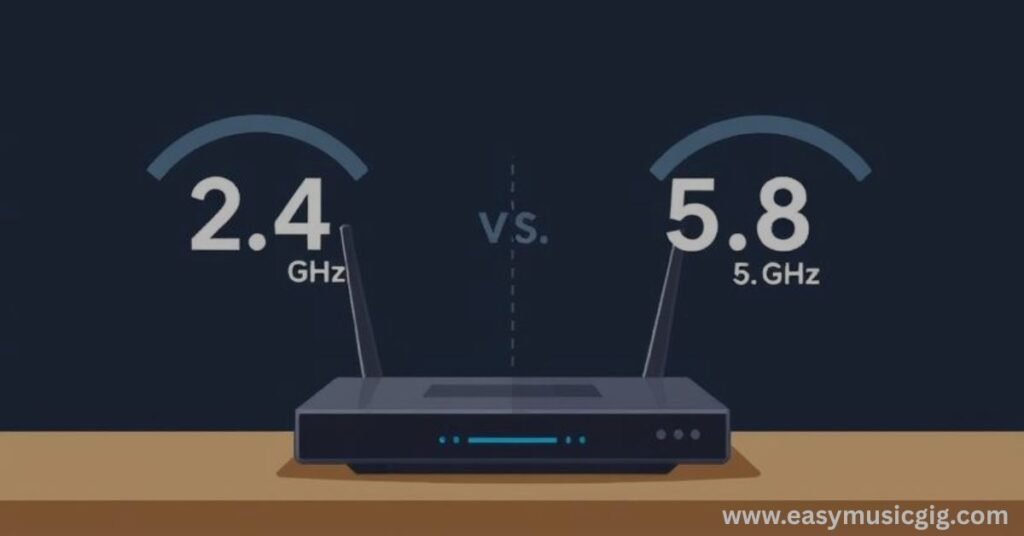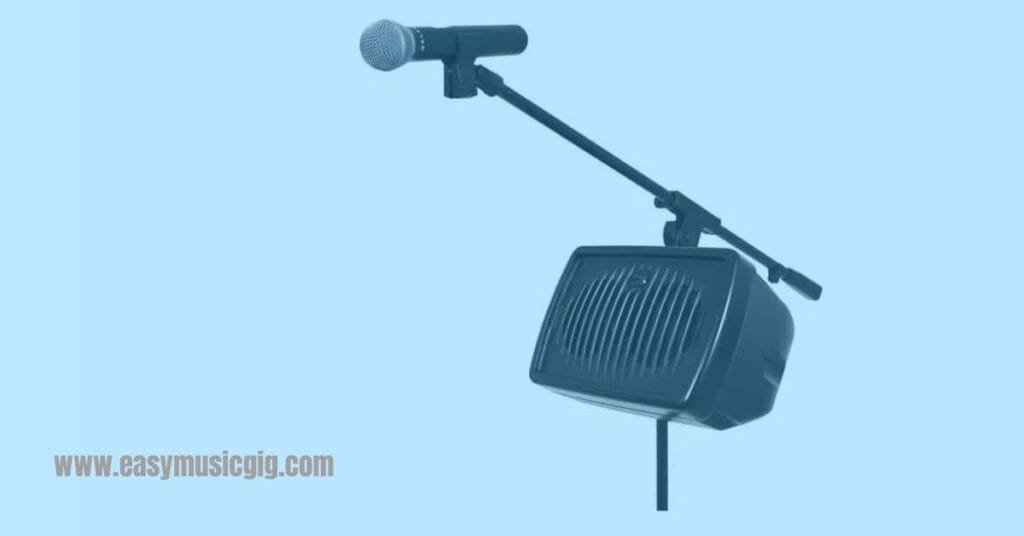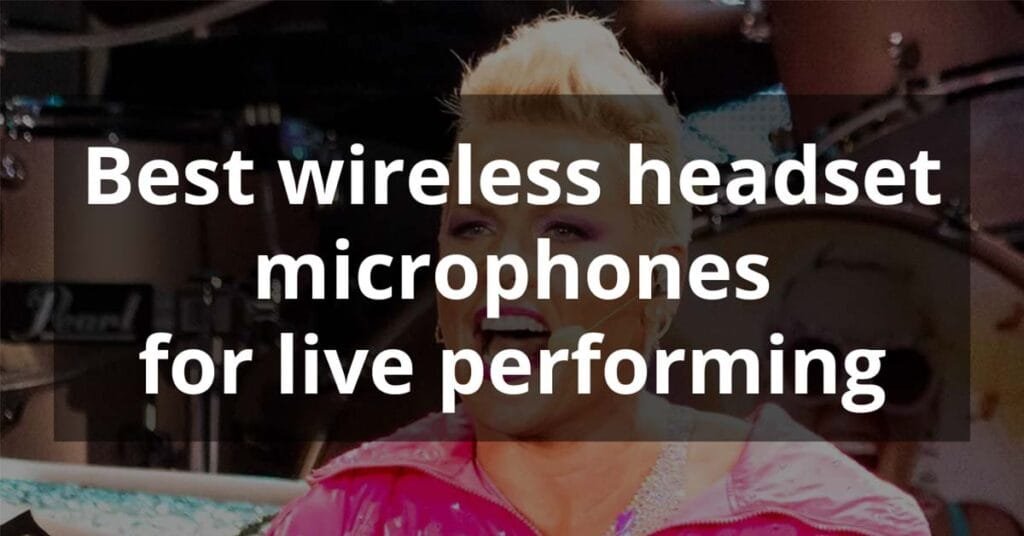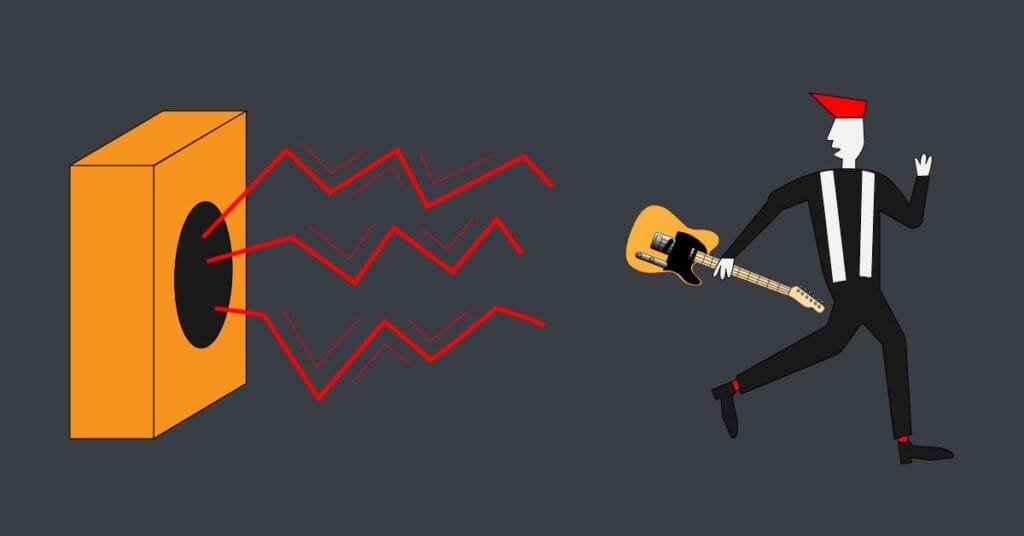Best frequency for easy wireless gigging: 2.4 vs 5.8 GHz
What do 2.4 GHz vs 5.8 GHz mean? Which frequency type for wireless gear you use for a gig can mean all the difference. The best frequency category ensures the best and most reliable sound for your gigs. This short post will help you better understand the pros and cons of each frequency type, so next time you play a gig, you will know which to use.
Understanding frequencies for wireless musicians’ gear
Wireless musical instrument gear allows musicians to move freely onstage or to have fewer cables in places that are visually exposed to the audience. The best example for the first is a wireless microphone or guitar, and for the latter, a tablet that sends MIDI commands via cable from a microphone stand.
This is a great tool that enhances modern performances, but how does it work? Every musician who uses wireless technology should know at least the basics of how it works. This can help you choose the right gear and deal with uninspected trouble during gigs.
Wireless systems transmit audio signals from the source (microphone, guitar,…) to the receiver using specific radio wave frequencies.
What is Wi-FI?
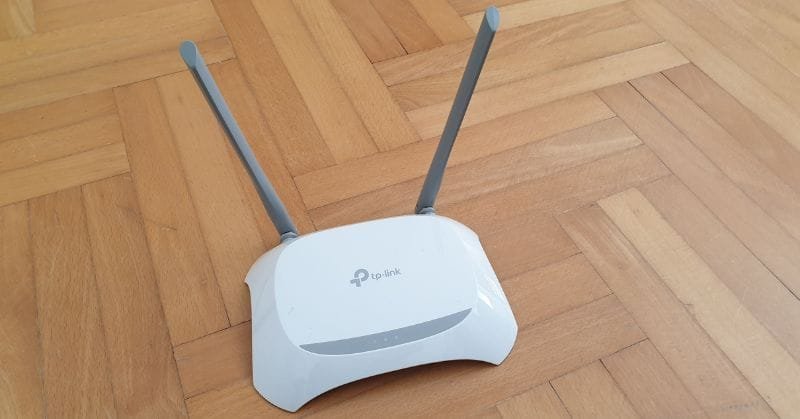
Wi-Fi is a wireless network technology that uses radio waves to send signals, in our case, audio. For easier categorization, wireless devices use certain frequency ranges to communicate. Devices that we are talking about work with these bandwidths:
- 2.4 GHz or 2400 MHz (frequency band from 2401 to 2484 MHz)
- 5.8 GHz or 5800 MHz (frequency band from 5725 – 5850 MHz)
As you see, 2.4 and 5.8 GHz are the “average” frequencies that a Wi-Fi device works with. The range in which it can operate is called a bandwidth.
2.4 and 5.8 GHz characteristics
The key is understanding the different characteristics of each frequency, so that we can select the best wireless system for concerts.
2.4 GHz characteristics
The 2.4 GHz frequency is the most widely used, therefore, it is more prone to interference from other devices. It operates inside the frequency range between 2401 and 2484 MHz. This operating range is 83 MHz (2484-2401 MHz) wide, which is narrower than the 125 MHz range that the 5.8 GHz devices use, meaning that it has less “space” to work in. This range of 83 MHz is divided into 14 channels of 22 MHz that overlap.
Soundwaves in the 2.4 GHz range cycle from minimum to maximum slower than in the 5.8 GHz range, but have a larger amplitude. Larger sound waves can travel longer distances and through physical obstacles like walls. They have a better range.
5.8 GHz characteristics
The 5.8 GHz frequency band is wider than the 2.4 GHz band. This range is less crowded, which reduces potential interference.
Waves in this band are smaller, but faster. Their faster speed allows more data to be sent through a given time period, making the 5.8 GHz band better for wireless systems that use more data. On the other hand, shorter waves have a shorter range.
Because of the shorter waves, barriers like walls can cause more signal loss than with the use of 2.4 GHz.
2.4 vs 5.8 GHz: Pros and cons
Knowing the pros and cons of 2.4 GHz and 5.8 GHz will help us decide which to use for any given live situation.
2.4 GHz
Pros
- Longer range
- Supported by more devices
Cons
- Fewer channels
- More prone to interference
5.8 GHz
Pros
- Less crowded: Less prone to interference
- Has more channels available
- Higher data transfer
Cons
- Shorter range
- Easily obstructed by physical barriers
Performance factors to consider when deciding which frequency range to use
These performance factors influence the way wireless systems work. Musicians and sound engineers must consider them when choosing between 2.4 GHz and 5.8 GHz models for their wireless gear.
Venue size
A large venue requires the use of wireless gear that uses 2.4 GHz. This frequency maintains a strong signal over much longer distances than 5.8 GHz.
Venue’s environment
This has to do with the location of the venue. The size of the venue and the number of people attending a concert are one thing, but this factor is focused on whether the venue is located in a remote location or the center of a large city. When playing a gig somewhere downtown, the crowd is not the only source of potential interference. An overcrowded frequency situation can be caused by the nearby residents and street traffic.

When playing in crowded frequency areas like city centers or large festivals, 5.8 GHz is a better solution.
Battery life
For those who consider this an important factor, 2.4 GHz has lower power requirements than 5.8 GHz.
Conclusion
Choosing between 2.4 GHz and 5.8 GHz for wireless gear is crucial for playing non-stressful and high-quality gigs. Understanding the main characteristics of each frequency will help you decide which frequency to work with.
When playing gigs at smaller venues, 5.8 GHz is usually the better choice, since the signal is more stable and the frequency band is less congested than 2.4 GHz. But for large venues, it is better to use 2.4 GHz, which travels larger distances.
